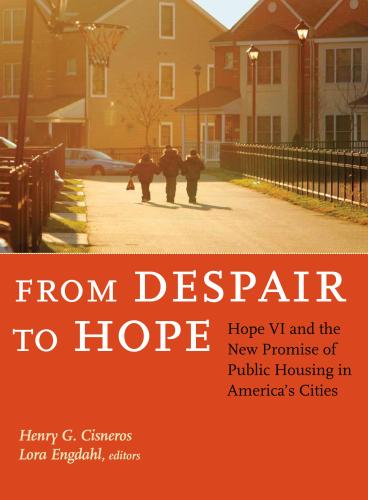Medicaid, the federal-state government program that provides health insurance to nearly 75 million low-income and disabled Americans, was at the center of Senate efforts to pass health care legislation last week.
While Senate Republicans, who hold a 52-seat majority, appear to be tabling health care to move on to other priorities, such as tax reform, they will almost certainly return to what has been one of their party’s central tenants for several years: repealing and replacing the Affordable Care Act.
Whether or not Senate Republicans bring up the defeated measures again, Medicaid will, for many of the reasons outlined below, continue to be a fundamental and sometimes divisive issue in congressional battles over health care. Here are several things to know about the program:
Who is covered by Medicaid?
Medicaid covers primarily single parents, children, people with disabilities, low-income seniors, low-income pregnant women, and other low-income adults. (Medicaid is often wrongly confused with Medicare, the entitlement program which mostly covers Americans over the age of 65, and which is funded through wage deductions.)
Children make up over 40 percent of all Medicaid recipients, not including those enrolled in the Children’s Health Insurance Program, which serves uninsured children in families with incomes too high to qualify for Medicaid.
Medicaid can offer societal benefits
Studies show that access to Medicaid early in life increases overall health outcomes later in life, including reduced adult mortality and disability rates, and improved economic welfare, such as higher income and more taxes paid.
Having access to Medicaid as a child can also improve educational achievement. Children who had access to Medicaid demonstrated improved scores in 4th and 8th grade reading compared to those who did not have access.
Many states expanded Medicaid under the Affordable Care Act. The ones that did not suffered from a “coverage gap”
A central provision of the Affordable Care Act is the national expansion of Medicaid coverage to Americans earning less than 138 percent of the federal poverty level. A Supreme Court decision in 2012, however, ruled that states had the option to refuse to participate in the Medicaid expansion. Currently, 31 states plus the District of Columbia have expanded Medicaid.
In 2015, Jeremy Barofsky, a Brookings nonresident senior fellow, found that among the states that had not expanded Medicaid, there was a substantial gap in coverage for those with incomes too high to qualify for Medicaid, but too low to obtain federal premium subsidies on insurance exchanges. This created a counterintuitive situation in which the poorest were denied coverage while those with slightly higher incomes could receive premium subsidies to buy health insurance.
Barofsky notes that participating states, on the other hand, experienced significant benefits from expanding Medicaid coverage, including soaring enrollment, better health outcomes, and reduced medical debt among recipients.
States that Trump carried in the 2016 election benefited the most from the expansion of Medicaid
While many states still have not expanded Medicaid under the Affordable Care Act, the states that did participate in the expansion presented the newly unified Republican government a difficult political problem in 2017.
As Senior Fellow William Galston notes, the three states that experienced the largest reduction in the share of uninsured people under the Medicaid expansion—Kentucky, Arkansas, and West Virginia—overwhelmingly supported Donald Trump in the 2016 election.
More broadly, of the 30 states that Trump won, 13 participated in the Medicaid expansion and enjoyed an average reduction of 8.4 percentage points in their uninsured rates, compared to only 5 percentage points among the nonparticipating states.
As a result, the deep cuts to Medicaid spending included in both the House and Senate versions of ACA replacement legislation presented very difficult choices to lawmakers whose constituents have benefited significantly from its expansion.
Republican governors, too, have a stake in keeping the Medicaid expansion
Just as many Republican lawmakers have a political interest in maintaining the ACA’s Medicaid expansion, so do many Republican governors.
Of the 31 expansion states, 13 have Republican governors and will hold gubernatorial elections either this year or next. As Governance Studies Fellows Elizabeth Mann and Molly Reynolds recall, several of these Republican governors voiced concerns about eliminating the ACA’s Medicaid expansion. These electoral incentives, combined with their opposition to efforts at the national level to roll back coverage, could drive them to continue to break with Republicans in Congress on this particular issue, and maybe others.
65% of Americans oppose cutting funding for Medicaid—even if it means they forgo a tax cut
In a recent poll, only 20 percent of Americans supported Medicaid cuts if it meant they would receive a tax cut but millions of Americans would lose coverage. Sixty-five percent opposed the idea, with 46 percent strongly opposing cuts.
Galston argues that public opposition to Medicaid cuts, in addition to widespread support for many of the benefits provided by the Affordable Care Act, complicated Republican efforts to roll back the law.
Block-granting Medicaid has many drawbacks
In an effort to reform Medicaid, many conservative lawmakers have supported the idea of transforming Medicaid from an entitlement program, under which eligible Americans can qualify for benefits, to a program of block grants administered by state governments. Under such a program, the federal government would allot a fixed amount of money to states, with fewer regulations on how it is spent.
As Senior Fellow Henry Aaron writes, block-granting Medicaid to states would result in “formula fights” where states and congressional districts—which have large variations in what they spend on Medicaid per resident—would be forced to fight over pieces of the Medicaid funding “pie.” In addition, he notes that a Medicaid block grant would put states in a bind when enrollments increase during times of economic recession.
Medicaid needs to be reformed in a bipartisan manner
Most policymakers from both sides of the aisle agree that federal entitlements, including Medicaid, are becoming unsustainable as the U.S. population ages. Many also argue that Medicaid’s joint state-federal structure badly needs rethinking.
However, as Senior Fellow Alice Rivlin argues, cutting Medicaid coverage for the neediest Americans, especially on a strictly partisan basis, is the worst possible way to begin the reforms that Medicaid needs.
Rivlin outlines several possible reforms that could draw support from both Republicans and Democrats, including shifting certain high-cost Medicaid enrollees to Medicare, or combining Medicaid spending for low-income adults and their children with subsidies for private health insurance.
Whatever the reforms, Rivlin concludes, “Reaching a consensus on the role of Medicaid in financing health care requires thoughtful deliberation, bipartisan negotiation, and two-party buy-in.”
More research and commentary on Medicare and Medicaid is available here.






Commentary
8 facts about Medicaid
August 2, 2017